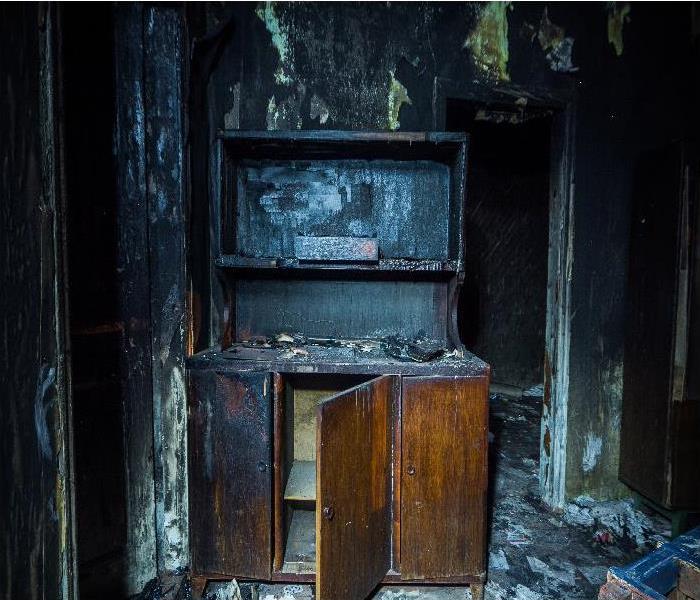How Can Embedded Smoke Odors Get Eliminated in Your Paramus Home?
7/25/2020 (Permalink)
Trapped scents can be a considerable challenge to remove in Paramus, but we have advanced tools and practical strategies to help.
Multiple obstacles exist after a fire loss incident in your Paramus home. Our restoration professionals can help address the varying layers of damage, much of which must occur shortly after arrival. Between emergency services, mitigation, and restoration cleaning, we have multiple skilled professionals capable of helping your home through each phase of recovery to make fire losses “Like it never even happened.”
Odors can often be one of the most considerable challenges for fire restoration in Paramus properties, especially when these conditions spread farther than the ignition point. With pathways in your house like the HVAC system, otherwise unaffected areas of your home can become compromised by harsh smoke odors after extinguishment. These effects can be even more challenging to address when these odors become embedded in porous materials.
How Do Odors Become Trapped?
Naturally, porous surfaces have a higher permeance level, allowing gaseous odors to penetrate the surface and embed within the composition of the material itself. In other situations, the fire's heat can expand pores, allowing smoke to enter the material without much incident. After extinguishment, the surface cools again, and these pores shrink and trap odor molecules within the construction elements and contents. Much of the time, these odor concerns do not get addressed until the final stages of restoration and recovery, specifically because controlled demolition and other actions taken throughout mitigation can agitate these odors. Some of the most sensitive materials for absorbing smoke after a fire include:
• Drywall
• Fabrics
• Textiles
• Furniture
• Flooring
Can Certain Practices Alleviate Harsh Odors?
Specific emergency services and other efforts started quickly when our professionals first arrive at a fire-damaged address can help to reduce the severity of odor concerns. These same actions can reduce the concentrations of soot and smoke residue particles as well. Debris removal from the flooring is one of the most effective approaches for reducing the severity and intensity of odors and other health hazardous concerns. We cannot stress enough the importance of removing from the fire-damaged premises non-salvageable fixtures, building members, and content to mitigate the smoke odor. Often, the moisture is also reduced within the structure from the fire-extinguishing efforts, another source of foul odors.
Do These Concerns Dissipate Naturally?
There is a common misconception that smoke and fire odors naturally dissipate on their own. In most situations, allowing odors to move unabated and unaddressed can lead to more significant damage areas and more of the contents in your home, requiring focused cleaning and recovery. There are multiple approaches to addressing odors where they are discovered. The choice between these depends on the severity of the situation, the material affected, and the likelihood of restoration. If it is more cost-effective to remove material and later replace it rather than attempting to clean and deodorize the affected area, these are considerations made during the job scoping phase. Some of the approaches designed to address trapped odors include:
• Fogging - Superheating deodorization products into a vapor or a mist provides small enough particles to penetrate porous surfaces and neutralize trapped odors within these materials. This deodorization process often does not occur until even reconstruction has finished in the house after mitigation.
• Surface Cleaning - The removal of soot and smoke residues can reduce the concentration and severity of smoke odors. Often, removing these residues involves emulsification or media blasting to prevent damage to the underlying hosting material.
• Controlled Demolition - There are many situations where the only suitable solution for protecting your home from odor threats involves removing compromised construction materials and contents. By only removing the portions of this material that are the most damaged, we can make the reconstruction and rebuilding phases more efficient and less costly.
What Tools Address Trapped Odors Exclusively?
The removal of smoke and burning odors can be a considerable challenge for even our SERVPRO professionals. Addressing these concerns utilizes multiple tools in our recovery inventory. Each of these units has its own set of advantages that make it ideal for specific conditions. The choice among the available equipment often comes down to several factors simultaneously, including the affected materials, how widespread the damage has become, and whether the occupants of the house are still on-site. The options for deodorization equipment in these situations often becomes a choice between:
• Thermal Foggers
• Hydroxyl Generators
• Ozone Machines
Fire restoration is not a universal approach from one address to the next. Each home requires its unique blend of cleaning, deodorization, and even reconstruction. Our SERVPRO of Paramus team can help with a fast and reliable response in your time of need. Give us a call today at (201) 445-5588.






 24/7 Emergency Service
24/7 Emergency Service
